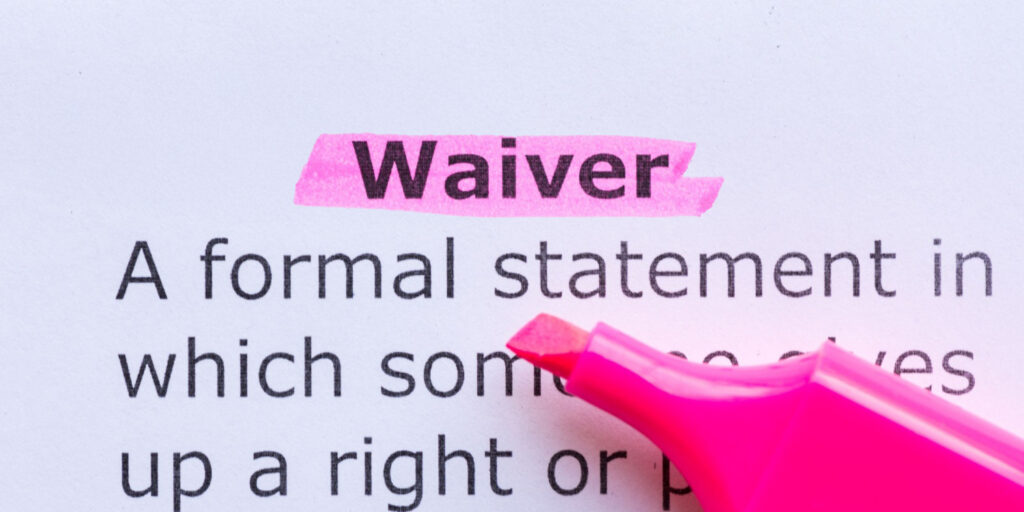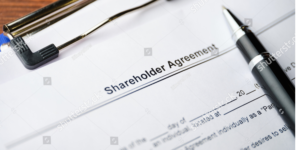A dividend waiver is where a company shareholder voluntarily gives up (waives) their right to receive a future dividend payment or series of dividends. By doing so, the shareholder opts to retain their share of company profit in the business rather than withdraw it as personal income. There are various reasons why shareholders may choose to do this, which we discuss below. We also explain the dividend waiver procedure and rules.
Key Takeaways
- A dividend waiver allows a shareholder to forgo dividends to retain profits in the business, improve tax efficiency, or address personal circumstances, as long as it has a valid commercial purpose to avoid HMRC scrutiny.
- The waiver must be formalised through a deed before dividends are declared or paid. The company cannot redistribute waived funds to other shareholders.
- Waivers should be used sparingly, ideally limited to 12 months, and not as a recurring practice. Long-term needs may require redesignating shares without dividend rights.
How do dividend waivers work?
When companies make a profit, they often distribute some or all of this money to their members (aka the shareholders). Distributions are typically in the form of dividend payments. Companies usually declare and pay dividends at a fixed rate per share of each class, with eligible shareholders entitled to receive dividend payments relative to the number of shares they hold.
Occasionally, one or more members may decide that they don’t need or want to take a particular dividend or a series of dividends declared within a specified period (e.g. a financial year). Alternatively, they may wish to receive dividends from only some of their shares.
- Dividends – do all shareholders get them?
- Dividend tax – a complete guide
- Most tax-efficient director’s salary and dividends for 2024-25
In these situations, a dividend waiver can provide a solution. A waiver enables shareholders to voluntarily give up their entitlement to one or more dividend payments without affecting the rights and distributions of other members.
The other shareholders in the company will still receive their share of the profits at the agreed rate per share, while the profits relating to the waived dividends will remain in the company to be used for other purposes.
However, the company must have sufficient distributable profit to support the payment of all dividends at the same rate. This rule applies regardless of whether some are being waived. Shareholders can’t waive their dividend entitlement simply to facilitate or increase dividend payments to other members.
This means that the company must not distribute the waived dividend income amongst the other shareholders. These profits must remain in the company—otherwise, HMRC would challenge the waiver as a ‘settlement’ of income.
The dividend waiver procedure
Shareholders must use a formal deed of waiver to notify a company of their decision to waive dividends. This document states that a shareholder voluntarily gives up their entitlement to dividends. Templates are available online.
The deed of waiver should contain the following details:
- Shareholder’s name and address
- Number and class(es) of shares held
- Company in which the shares are held
- Whether the dividend waiver applies to a single interim or final dividend, to all dividends within a specified period, or indefinitely. The latter option is not recommended
- If the shareholder has more than one class of shares, whether the waiver applies to dividends attributable to all classes or only certain classes
- The reason for waiving the dividend(s)
- Date of waiver
- Shareholder’s signature
- Name, address, and signature of a witness to the deed of waiver
The timing of the dividend waiver is also important because you can’t execute a waiver after entitlement to a dividend payment occurs:
- For final dividends, the shareholder’s waiver must be in place before the company declares them. Shareholders usually declare final dividends at an annual general meeting (AGM) after approving the annual accounts.
- For interim dividends, the waiver must be in place before the company pays them. Interim dividends are those paid between annual general meetings.
The company directors should record their acceptance of any dividend waiver in board meeting minutes. They should also retain a copy of the deed of waiver with the company’s records.
For the duration of the waiver, the company can declare, approve, and pay dividends to the other members as normal while retaining the profits from the waived dividends in the business.
Who can be a witness to a deed of waiver?
A witness to a deed of waiver can be any individual who is at least 18 years old and not a party to the deed. To uphold best practice and avoid potential conflicts of interest, they should be unconnected to the shareholder and not benefit from the waiver (e.g. not a family member, fellow shareholder, or director of the company).
When witnessing and signing the deed, the witness must be physically present and in the same room as the shareholder. They cannot witness the execution of the deed by video call. Moreover, they can only add their signature if they are present when the shareholder signs the deed.
Why would a shareholder waive their right to dividends?
Since companies pay dividends at the same rate per share of each class, this arrangement may not suit all shareholders at every distribution round. A dividend waiver provides flexibility for shareholders who don’t want to take dividends for a certain period.
The best reason for waiving dividends is to keep profit in the business and further the company’s aims. For example, to invest in new equipment, develop new products, or fund growth. However, there may be other motivations, such as tax efficiency, shareholder inactivity, or family business scenarios.
Tax efficiency
If a shareholder is a higher-rate or additional-rate taxpayer, they may use a dividend waiver to avoid paying more personal tax on income they don’t need. Similarly, if the dividend income would take them over the basic-rate threshold.
In smaller owner-managed companies, keeping profit in the business may be more tax-efficient and profitable in the long term than withdrawing funds for personal use, paying additional tax on that income, and then reinvesting their own money in the company when required.
A shareholder may also wish to avoid dividends for a period if the additional income would make them liable to the High Income Child Benefit Charge. This charge applies when a person’s individual annual income exceeds £60,000.
Shareholder inactivity
If a founding shareholder does not actively participate in the company day-to-day (e.g. as a director) but still wishes to retain their stake in the business, they may choose to waive their dividend entitlement for a specified period or indefinitely.
Family business scenario
In a family company, some shareholders (e.g. retired parents or grandparents) may prefer to retain their share of profit in the business to support its growth. Their children or grandchildren can continue to run the company and take dividends.
Potential issues with HMRC – anti-avoidance settlements
There should always be a commercial reason for using a dividend waiver. This ensures compliance with settlements legislation and avoids issues with HMRC. The purpose of the legislation is to prevent individuals from diverting income to other people to gain tax advantages.
Using a waiver to divert dividend income to another person (e.g. a spouse) who pays a lower rate of Income Tax (or has no tax liability at all) would be viewed as a tax-avoidance settlement. Where this applies, HMRC would treat the sum of the waived dividend income as belonging to the shareholder who waived it.
Use dividend waivers sparingly
You should avoid using dividend waivers regularly. HMRC may challenge whether repeat waivers have a genuine commercial motivation rather than a tax avoidance one.
Additionally, waivers should last no more than 12 months. Long-term dividend waivers can inadvertently reduce the value of the associated shareholdings while potentially increasing the value of other shares in the company.
Where shareholders require waivers regularly or for long periods, it may be better to redesignate some or all the shares to a class that doesn’t carry dividend rights (e.g. alphabet shares or management shares).
Thanks for reading
Please feel free to comment below if you have any questions about this post. For more limited company guidance and small business advice, explore the 1st Formations Blog.
Please note that the information provided in this article is for general informational purposes only and does not constitute legal, tax, or professional advice. While our aim is that the content is accurate and up to date, it should not be relied upon as a substitute for tailored advice from qualified professionals. We strongly recommend that you seek independent legal and tax advice specific to your circumstances before acting on any information contained in this article. We accept no responsibility or liability for any loss or damage that may result from your reliance on the information provided in this article. Use of the information contained in this article is entirely at your own risk.












Join The Discussion
Comments (2)
Excellent article! It was helpful learning about a dividend waiver for my own professional UK accountants business.
Thank you for your kind comment.
We are very pleased you enjoyed learning about a divident waiver. It is our goal to provide as much information as possible.
Kind regards,
The 1st Formations Team.